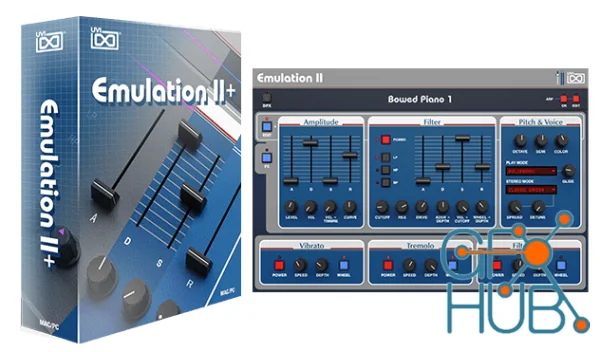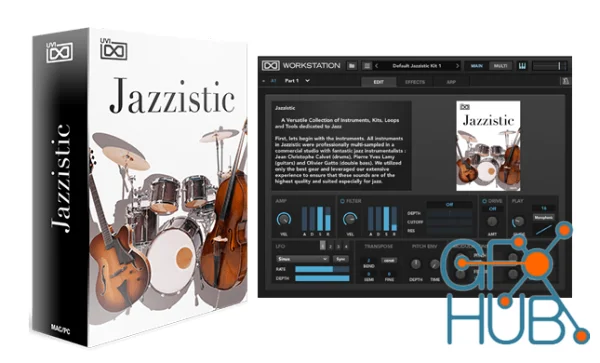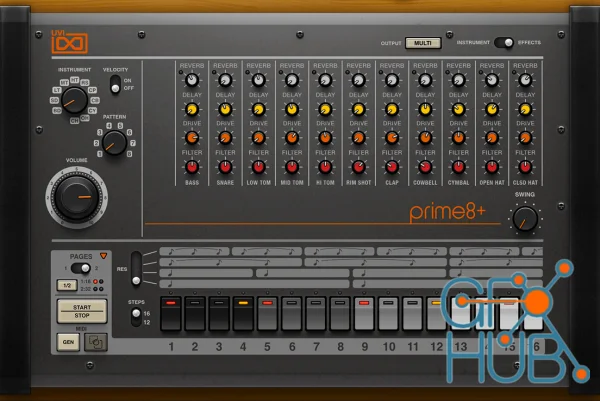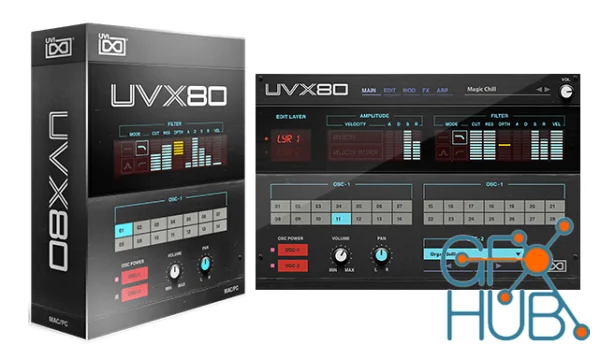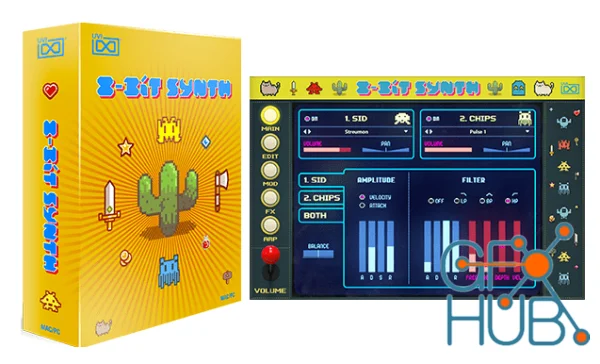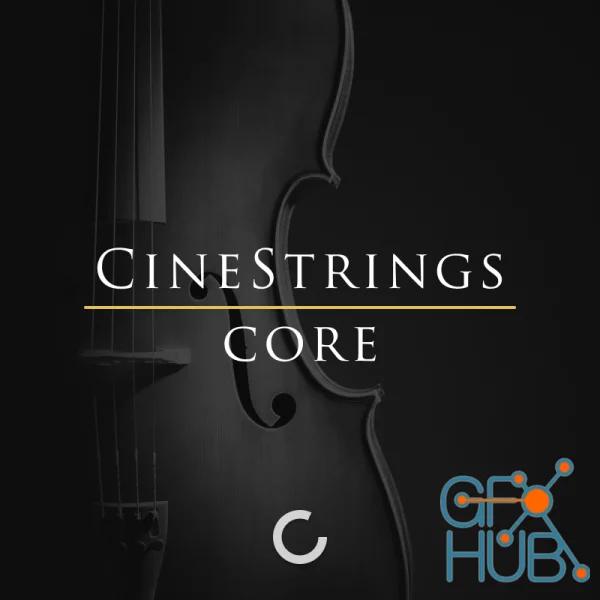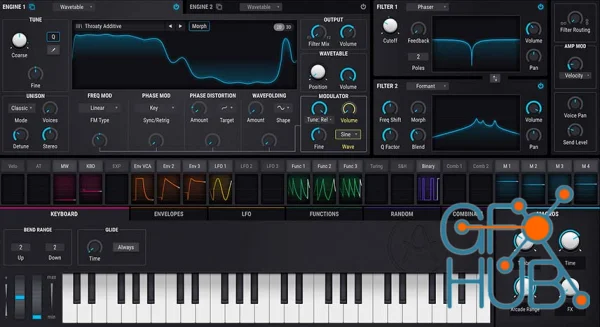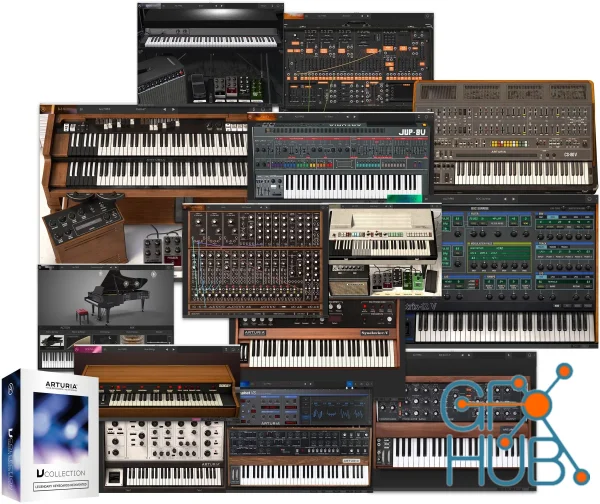On this page you can download huge sample libraries for sound and music production, video editing and for use in popular audio applications. You can do it absolutely for free and you don't even need to register.
Over 2400 individual drum sounds plus 210 preset kits with sequences equals one massive vintage drum machine. Drumulation+ contains all elements from the original Drumulator along with drums and percussive samples from the Emulator, Emulator II, and Emulator III. Finally, we’ve included a full set of original sounds from the classic SP12, making it an extraordinary and inspiring source
Back in 1985 Japanese super-synth designer Yamaha set out to fashion their biggest and worst FM synth ever. And they succeeded. The DX1 was constructed in an extremely limited run of 100 units, utilizing only top-of-the-line components. The resulting sound these machines made was unlike anything else, almost more organic than digital. To create FMX1, we carefully restore the synth,
Jazz Instruments and Loops. Includes double basses, guitars, Rhodes MK1, Hammond B3 and drums. Also packed with loops and sophisticated patterns for Jazz production. Stretch, layer and process sounds to perfection with UVI Workstation. All instruments in Jazzistic were professionally multi-sampled in a commercial studio with fantastic jazz instrumentalists: Jean Christophe Calvet
RETURN OF A LEGENDARY '80S DRUM MACHINE. All sounds multi-sampled through a Class-A signal chain. Mastered by Chris Gehringer at Sterling Sound in NYC. 140+ handcrafted preset kits, 1100+ built-in MIDI patterns The most iconic and sought after drum machine in the world, genre-defining, used on countless hits, proving itself decade after decade, presented and represented time and time
UVX80 is based on a well known Japanese manufacturer’s first analog polyphonic synth, a digitally-controlled 2+1 oscillator, 8-voice, 61-key instrument launched in 1984 with a gorgeous and futuristic-looking visual stance. Technically comparable to the JX-3P, this synth boasted a more robust architecture with 2 extra voices, a sub-oscillator and real pulse-width modulation. Despite its
Retro Chip Sounds and Beyond. Inspired by the lo-fi hardware sounds of yesteryear. Dual-layer engine loaded with authentic hardware samples. Explore hundreds of custom presets and create your own Inspired by some of our favorite vintage computers and gaming systems, 8-Bit Synth delivers a massive collection of authentic sounds created with the hardware. Dial up custom patches created
Xtreme FX 1.5 delivers a massive collection of over 5,000 high-quality, professionally recorded and treated samples including everything from practical sounds and foley to stylized sound design, environmental ambiences, drones, musical elements, synthesized effects and more. Easily integrate thousands of sounds into your project with a fast and convenient workflow, browse by category,
CineStrings Core is a flagship orchestral strings library recorded at the MGM Scoring Stage at Sony Pictures Studios by master engineer Dennis Sands. This library is part of the CineSymphony series and blends well with our CineBrass, CineWinds and CinePerc libraries from this same legendary Hollywood scoring stage. Version 2.0 features a brand new interface, a complete new sonic
246 Arturia Sound Banks & 135 Third Party Sound Banks. Release notes In addition to the two left hands of architecture with a million small pictures, the Arturia plugins also have a paranoid flaw in checking the license of protected presets - is checked by legitimate each of more than 10,000 protected presets, which greatly increases the initialization time of plugins :( Therefore,
This is the most comprehensive anthology of classic synth and keyboards ever made. This is decades of passionate research, modelling, and development. This is your chance to take your place in music history. What do you see? For the team at Arturia, V Collection 7 is landmark. Countless hours of research, development, coding, sound designing, playing, and refining. Naturally, it feels
Classic Breaks from the 1980s played by one of the most successful session drummers of all time! EIGHTIES DRUMS is a massive sample library from the drum legend that is Geoff Dugmore. It takes its inspiration from the great drum tracks of the 1980s. Geoff Dugmore is British professional musician who has played drums and percussion on over 150 hit records, including 44 no.1 albums. Over
A collection of musical sounds and special effects inspired by the imagery of contemporary science fiction and horror SIMULACRUM is an amazing collection of musical sounds and special effects by composer and sound designer Steven Tunnicliffe. Inspired by the imagery of contemporary science fiction and horror, Simulacrum comprises a diverse assortment of sounds, from long, evolving
Aizer X series coming back with a big update. Completely reimagined version of AizerX - Classic Trailer Toolkit that will help you enjoy your experience even more. The AizerX Classic Trailers Toolkit is the newest product from Keepforest studio, based on the original AizerX engine with improved functionalities. Continue with the outstanding smart samples randomization for creating
Gusli is an ancient Slavonic multi-string plucked musical instrument of the dulcimer and zither family. This instrument bears similarities with the Greek kithara, the Jewish nevel, the Finnish kantele, etc. It’s important to mention that many ethnic groups have their own versions of this instrument, which presumably share common roots. Yet nobody can trace those roots to the times of
Bread-and-butter sounds for ultra-modern productions. Be inspired with 50 essential MASSIVE X presets for pop and hip hop vibes, including keys, bass, pads, and drums. Explore 50 essential presets of bass, keys, pads, and drums to add instant pop and hip hop vibes to your tracks. Take a sneak peek with Matt Lara as he plays through some of his favorite patches.
Free Download Sample libraries for audio and video production
Sample is a piece of audio information, cut or recorded from an existing source. For example, it can be the sound of an acoustic musical instrument, or the sound of man-made or natural origin. Samples are used to create a dramatically new sound, or even entire musical compositions.
Samples can be both fragments of ready-made music, and, for example, fragments of film soundtracks and the like.
In this subcategory of our site you can find a huge number of samples which can be used for various purposes. For example, you can use them to make some cool tracks you can use in your video games. You can also use them for creating videos.
What are the samples?
Samples are divided into:
- Musical - these are snippets of songs or specific instrumental parts;
- Voice samples are recordings of different voices. These samples also include dialogues from movies.
- Natural - these are sounds of nature like the sound of raindrops, waves, birds crying, leaves rustling, etc.
How do I use samples?
Here are some ways you can use samples in the right way:
Mix them up
Unfortunately, you can't just find the necessary material, cut the sample and insert it into the track. To make the song sound right, you'll have to process the sample and the track. First of all, you have to prepare the sample for mixing.
A cut sample usually contains a lot of noise that must be removed. You can do it, for example, with special utilities, that remove noise. Once you've dealt with the extraneous sounds, you should try to combine the sample with the track. Our site has a really big selection of different samples, and we're sure that you'll find something to your liking.
To get the most out of your sample and track, try beat slicing. It lets you slic a sample down to the individual beats, which helps a lot when merging.
Copy them
However, you don't have to bother and just copy almost completely the fragments from other tracks with minimal changes. It's hard to consider a track like that as an independent piece of work, but if you're talented enough, you can make a pretty good mashup.
Sampling processing
Let's pretend you downloaded a sample from our site. But if you want it to be really good, you will have to do some work with it.
Here's how to transform the sample step by step and make it much better:
- Trim it - any DAW program will suffice for this. It's easy enough to cut the right piece. Just set the trim points at the beginning and end of the sample. If it's a loop, make sure that the end point is set correctly so that the sample loops correctly. Also, don't trim too sharply. There is still a lot of important information about the sound before the audible beat. Likewise, removing too much tail can leave you with an unpleasant dry and harsh sound.
- Normalize it - normalize the sample to a peak at 0 dB full scale.
- Darken it - To avoid unwanted clicks, check the beginning and end of the sample and find where the waves cross the zero axis. If you can't find suitable zero crossing points, use short fades at the beginning and end. Make sure that the piece of the track doesn't cut off abruptly.
- Save it - save your sample in whatever format suits your purposes. 24-bit WAV is often the best option. It's such an uncompressed audio file format that is compatible with almost any audio program.
